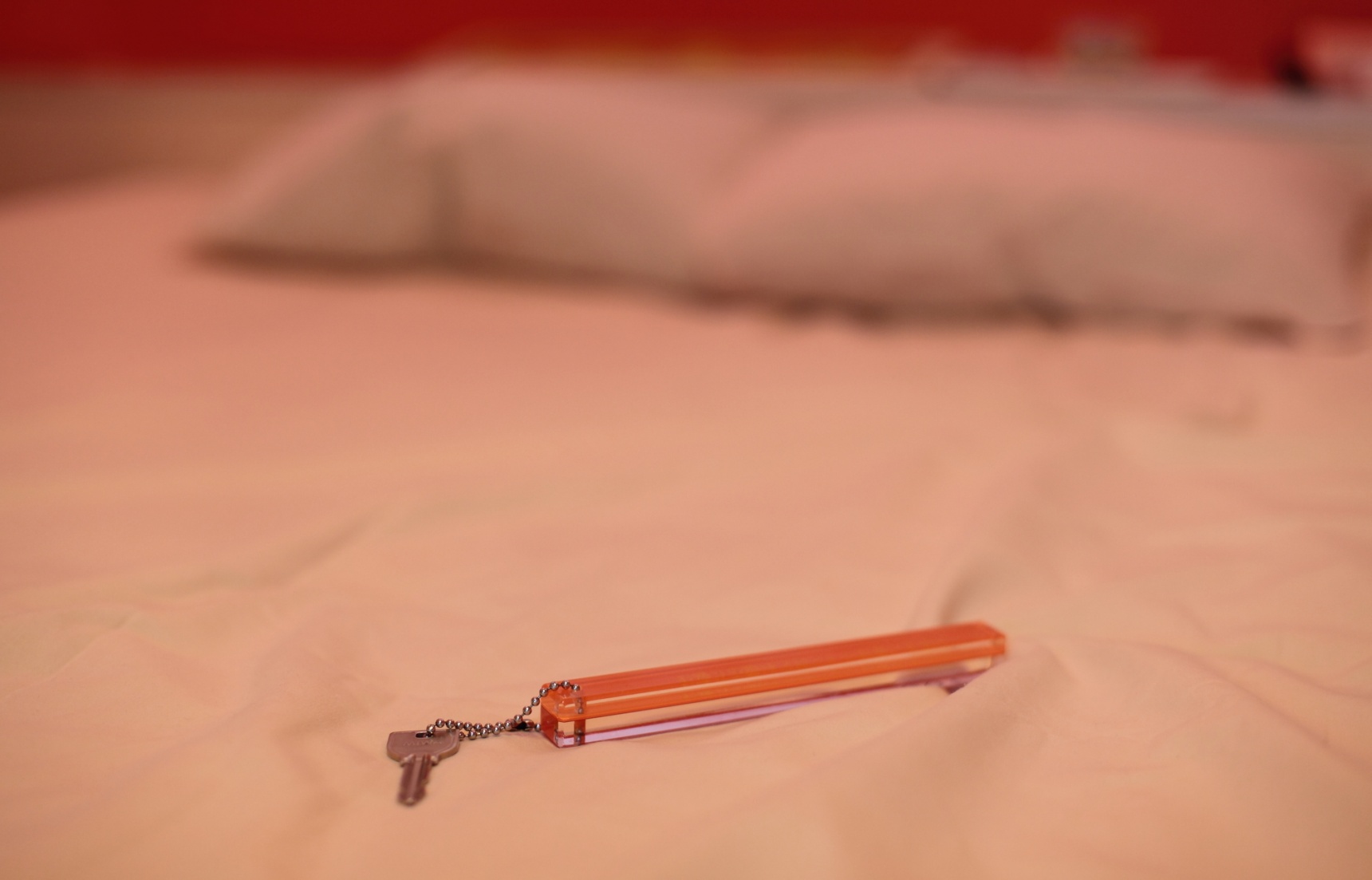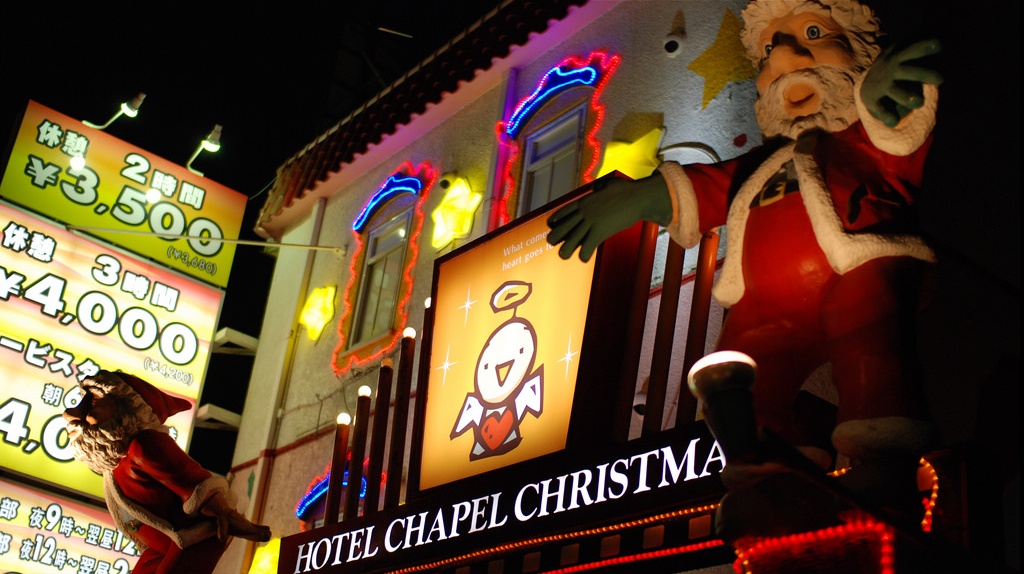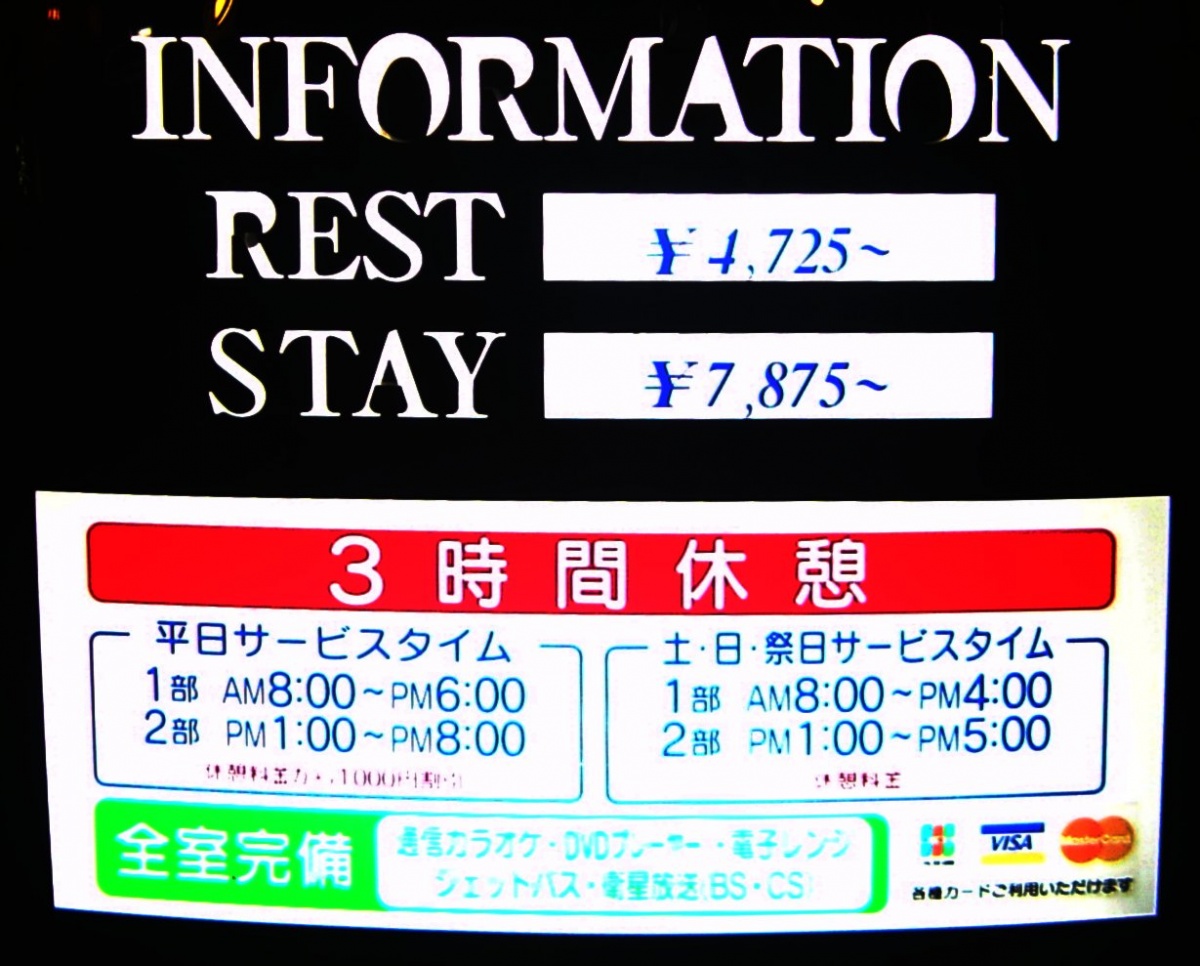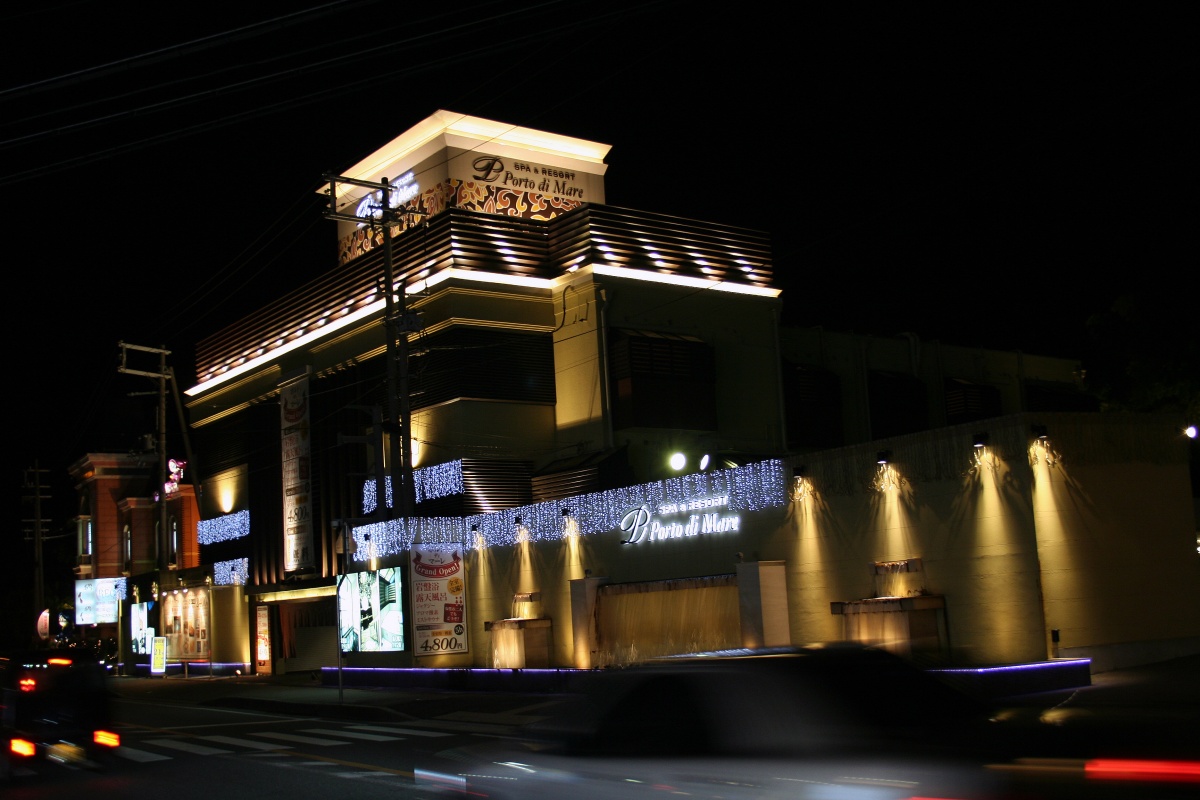All About Love Hotels

Japan’s many love hotels offer couples a private space for some intimate time, typically for an hourly rate. However, despite what you might expect, love hotels are slowly beginning to shed their image as hotbeds of illicit after-hours activity.
By Michael Kanerthttps://www.youtube.com/watch?v=IXgX_r-x-XE
Between Japan’s small apartments and the prevalence of people living at home well into their 30s, love hotels have become a common recourse for young couples looking for some privacy without worrying about who’s listening through the walls. With many high-end, luxury and fantasy-style options now available, they’re also popular with couples looking to add a bit of spice to their night life. Some love hotels even have point cards, and with an estimated 37,000 love hotels across the country, the industry has been estimated to bring in as much as US$40 billion per year.
How to Spot a Love Hotel

https://www.flickr.com/photos/eelssej_/3015111093/in/photolist-5Areu2-9P8f6Z-4tHxwM-9P8eKZ-dorm5d-9g6dxy-9g7vK3-9Pb6od-9g6f2C-9g38ca-9g6cQ3-9g4ph6-9P8eXk-9g6eos-9g38xD-9g38sk-9g374g-9g36iH-9g36vF-9g6de5-9P8fjD-9g6dGy-9g365F-9g38Hi-vWLc1y-9g6eSC-9P8eP2-9g6
Love hotels are quite easily distinguished from normal hotels. First of all, there won’t be a grand entranceway of any sort. Rather, you’ll have a small, secluded doorway in a poorly lit corner that you can quickly slip around to get out of view from the street. Some love hotels will even have two or more entrances so it’s hard to determine who entered with whom. Some love hotels will still not allow same-sex couples to enter, however.
Love hotels will also often have garish pink or neon signs, or may even be constructed like a fantasyland castle. On the other hand, they may also be plain-faced structures with no windows and discreet entrances. Thus, the most surefire sign of a love hotel is the price list posted outside.

https://ja.wikipedia.org/wiki/%E3%83%A9%E3%83%96%E3%83%9B%E3%83%86%E3%83%AB
Love hotels will have different charges depending on the length of your stay. A short “rest” (休憩・kyukei) may be charged in blocks of 30, 60 or 90 minutes (minutes = 分), or perhaps two to three hours (hours = 時間), with prices varying accordingly. Cheaper rates are often available during the day.
A full night’s “stay” (宿泊・shukuhaku), on the other hand, is typically only available after a certain hour, usually 10 or 11 p.m. While you can’t make reservations, these rates are often cheaper than those of a normal hotel, making love hotels an appealing option for backpackers and shoestring travelers.
Getting in & Out

https://trip101.com/article/some-special-time-for-you-at-one-of-japan-s-love-hotels
Older love hotels will have staff concealed behind a slot or fogged glass at the entrance, with only hands visible during the check-in transaction. Newer places, on the other hand, will be fully automated, with room selection determined by touch screen and payment done remotely upon departure. You can typically choose your room type from a panel upon arrival, with the unavailable rooms darkened.
A disconcerting feature of automated love hotels is that the room door will lock behind you upon entry, and you’ll only be able to get out once you’ve paid the fee. Depending on the place, you might do this with a credit card, or you might have to fill in a paper form, stick it in a tube along with your money, and wait for the staff to let you out remotely after sending your change back through the tube.
Themed Rooms
https://www.youtube.com/watch?v=IXgX_r-x-XE
One of the key appeals of modern love hotels is the themed room. Some simply aim for luxury, with Austin Powers-style beds and swanky decor, but others will truly dive into a fantasy theme: doctor’s office, casino, Egyptian pyramid, dungeon, classroom, space ship—you name it. You might also find amenities like a hot tub, massage chair, rotating bed, flashing lights, karaoke machine, video game system or even cosplay costumes available in addition to a (sometimes basic, sometimes elaborate) selection of sexual aids.
Where to Find a Love Hotel
Love hotels can be found in pretty much any city or mid-sized town in Japan—though in smaller towns, they’ll usually be placed along major highways or hidden in the outskirts. That said, these distant outposts also tend to be where you'll find the more elaborate, fantasy-style structures with swankier rooms.
In Tokyo, Shibuya’s Dogenzaka area is famous for love hotels, and you’ll find quite a few in Shinjuku’s Kabukicho area as well. Umeda is the prime district to search in Osaka.
If you’d like to know more, you can find a convenient (and oddly illustrated) guide to love hotels below:




